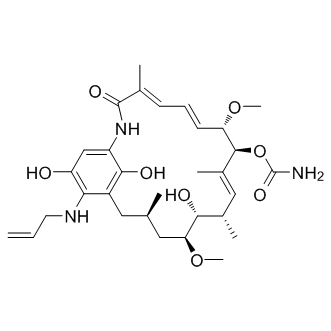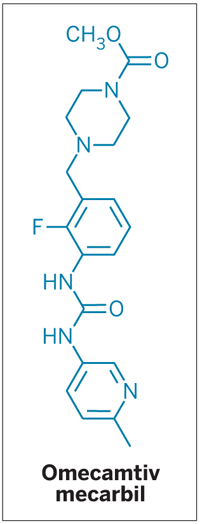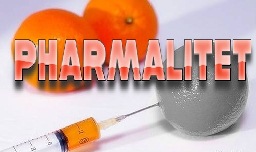Monday, September 30, 2013
Sunday, September 29, 2013
Fake?
Labels:
cognitive,
deconstruction,
failure,
future foresight,
nice idea,
politics,
real science,
shit of the day
Just friends. Fake?
Labels:
chaos,
cognitive,
deconstruction,
failure,
politics,
real science
Saturday, September 28, 2013
Friday, September 27, 2013
Are you motivated?
Labels:
another magic cure,
chaos,
cognitive,
Death Valley,
deconstruction,
future foresight,
masterpiece of the day,
nice idea,
Partisan of Death Valley,
politics,
quantum,
quote of the day,
real science,
video
Targeted failure of the week. Post No 107. Belagenpumatucel-L
Published on Thursday, September 26, 2013
 NovaRx Corp. (San Diego, Calif.) said Lucanix belagenpumatucel-L plus best supportive care (BSC) as maintenance therapy missed the primary endpoint of improving median overall survival (OS) vs. placebo plus BSC in the Phase III STOP trial to treat advanced non-small cell lung cancer (NSCLC) (20.3 vs. 17.8 months, p=0.594). The double-blind, international trial enrolled 532 patients with stage III/IV NSCLC who have responded to, or have stable disease following one regimen of, first-line platinum-based chemotherapy. NovaRx said the endpoint was not met due to enrollment of patients more than 12 weeks following the completion of chemotherapy. In a predefined subgroup of 305 patients who were enrolled within 12 weeks of completing chemotherapy, Lucanix led to a median OS of 20.7 months vs. 13.4 months for placebo (p=0.083). Data will be presented at the European Cancer Congress in Amsterdam on Sept. 28.
NovaRx Corp. (San Diego, Calif.) said Lucanix belagenpumatucel-L plus best supportive care (BSC) as maintenance therapy missed the primary endpoint of improving median overall survival (OS) vs. placebo plus BSC in the Phase III STOP trial to treat advanced non-small cell lung cancer (NSCLC) (20.3 vs. 17.8 months, p=0.594). The double-blind, international trial enrolled 532 patients with stage III/IV NSCLC who have responded to, or have stable disease following one regimen of, first-line platinum-based chemotherapy. NovaRx said the endpoint was not met due to enrollment of patients more than 12 weeks following the completion of chemotherapy. In a predefined subgroup of 305 patients who were enrolled within 12 weeks of completing chemotherapy, Lucanix led to a median OS of 20.7 months vs. 13.4 months for placebo (p=0.083). Data will be presented at the European Cancer Congress in Amsterdam on Sept. 28.
 NovaRx Corp. (San Diego, Calif.) said Lucanix belagenpumatucel-L plus best supportive care (BSC) as maintenance therapy missed the primary endpoint of improving median overall survival (OS) vs. placebo plus BSC in the Phase III STOP trial to treat advanced non-small cell lung cancer (NSCLC) (20.3 vs. 17.8 months, p=0.594). The double-blind, international trial enrolled 532 patients with stage III/IV NSCLC who have responded to, or have stable disease following one regimen of, first-line platinum-based chemotherapy. NovaRx said the endpoint was not met due to enrollment of patients more than 12 weeks following the completion of chemotherapy. In a predefined subgroup of 305 patients who were enrolled within 12 weeks of completing chemotherapy, Lucanix led to a median OS of 20.7 months vs. 13.4 months for placebo (p=0.083). Data will be presented at the European Cancer Congress in Amsterdam on Sept. 28.
NovaRx Corp. (San Diego, Calif.) said Lucanix belagenpumatucel-L plus best supportive care (BSC) as maintenance therapy missed the primary endpoint of improving median overall survival (OS) vs. placebo plus BSC in the Phase III STOP trial to treat advanced non-small cell lung cancer (NSCLC) (20.3 vs. 17.8 months, p=0.594). The double-blind, international trial enrolled 532 patients with stage III/IV NSCLC who have responded to, or have stable disease following one regimen of, first-line platinum-based chemotherapy. NovaRx said the endpoint was not met due to enrollment of patients more than 12 weeks following the completion of chemotherapy. In a predefined subgroup of 305 patients who were enrolled within 12 weeks of completing chemotherapy, Lucanix led to a median OS of 20.7 months vs. 13.4 months for placebo (p=0.083). Data will be presented at the European Cancer Congress in Amsterdam on Sept. 28.
belagenpumatucel-L as a rocket-science medicine:
A transforming growth factor beta2 (TGF-beta2) antisense gene-modified allogeneic tumor cell vaccine with potential immunostimulatory and antineoplastic activities. Belagenpumatucel-L is prepared by transfecting allogeneic non-small cell lung cancer (NSCLC) cells with a plasmid containing a TGF-beta2 antisense transgene, expanding the cells, and then irradiating and freezing them. Upon administration, this agent may elicit a cytotoxic T lymphocyte (CTL) response against host NSCLC cells, resulting in decreased tumor cell proliferation; vaccine immunogenicity may be potentiated by suppression of tumor TGF-beta2 production by antisense RNA expressed by the vaccine plasmid TGF-beta2 antisense transgene. Elevated levels of TGF-beta2 are frequently linked to immunosuppression in cancer patients and may be inversely correlated with prognosis in patients with NSCLC
A transforming growth factor beta2 (TGF-beta2) antisense gene-modified allogeneic tumor cell vaccine with potential immunostimulatory and antineoplastic activities. Belagenpumatucel-L is prepared by transfecting allogeneic non-small cell lung cancer (NSCLC) cells with a plasmid containing a TGF-beta2 antisense transgene, expanding the cells, and then irradiating and freezing them. Upon administration, this agent may elicit a cytotoxic T lymphocyte (CTL) response against host NSCLC cells, resulting in decreased tumor cell proliferation; vaccine immunogenicity may be potentiated by suppression of tumor TGF-beta2 production by antisense RNA expressed by the vaccine plasmid TGF-beta2 antisense transgene. Elevated levels of TGF-beta2 are frequently linked to immunosuppression in cancer patients and may be inversely correlated with prognosis in patients with NSCLC
Thursday, September 26, 2013
Fake?

Labels:
cognitive,
deconstruction,
politics,
real science
Ukraine will be free - no matter what the brother would like!
Labels:
cognitive,
deconstruction,
depression,
failure,
future foresight,
nice idea,
paradigm,
politics,
real science,
video
Targeted failure of the week. Post No 106. Retaspimycin
 The drug, retaspimycin HCl, also failed to improve overall survival in patients with squamous cell carcinoma, a type of non-small cell lung cancer that is closely linked to smoking.
The drug, retaspimycin HCl, also failed to improve overall survival in patients with squamous cell carcinoma, a type of non-small cell lung cancer that is closely linked to smoking.
And the "story" of retaspimycin hydrochloride
The hydrochloride salt of a small-molecule inhibitor of heat shock protein 90 (HSP90) with antiproliferative and antineoplastic activities. Retaspimycin binds to and inhibits the cytosolic chaperone functions of HSP90, which maintains the stability and functional shape of many oncogenic signaling proteins and may be overexpressed or overactive in tumor cells. Retaspimycin-mediated inhibition of HSP90 promotes the proteasomal degradation of oncogenic signaling proteins in susceptible tumor cell populations, which may result in the induction of apoptosis.
The hydrochloride salt of a small-molecule inhibitor of heat shock protein 90 (HSP90) with antiproliferative and antineoplastic activities. Retaspimycin binds to and inhibits the cytosolic chaperone functions of HSP90, which maintains the stability and functional shape of many oncogenic signaling proteins and may be overexpressed or overactive in tumor cells. Retaspimycin-mediated inhibition of HSP90 promotes the proteasomal degradation of oncogenic signaling proteins in susceptible tumor cell populations, which may result in the induction of apoptosis.
Labels:
deconstruction,
depression,
failure,
HTS,
shit of the day,
targeted failure
Wednesday, September 25, 2013
Russian business - more details
Labels:
another magic cure,
chaos,
deconstruction,
depression,
failure,
future foresight,
masterpiece of the day,
politics,
real science,
shit of the day,
video
Tuesday, September 24, 2013
Post-modern society. Erection as a critical resource
 A 66-year-old unnamed man reportedly overdosed deliberately in order to impress his new girlfriend, but wound up with an inflamed and fractured penis that was showing signs of gangrene after experiencing an erection for several days, according to Colombia Reports. There were also bruises on his testicles. As a result, he underwent amputation so the gangrene would not spread.
A 66-year-old unnamed man reportedly overdosed deliberately in order to impress his new girlfriend, but wound up with an inflamed and fractured penis that was showing signs of gangrene after experiencing an erection for several days, according to Colombia Reports. There were also bruises on his testicles. As a result, he underwent amputation so the gangrene would not spread.
This was not the only unfortunate outcome to occur recently from a Viagra overdose. In Yemen, a 25-year-old man took five pills at once as he prepared to sleep with his new bride on their first day as a married couple, The Daily Mail writes. Their marriage did not last long. He collapsed and was taken to a hospital, where he could not be revived and was pronounced dead.
Big Pharma's R&D spending is growing. The numbers
From here
 Ultimately, branded drugs have a finite time period where they can be sold exclusively without generic competition of 20 years. However, the clock on patented drugs starts ticking when the Food and Drug Administration grants a biopharmaceutical company the right to investigate a new drug in clinical trials. Therefore, you can knock off an average of eight to 10 years from of a drugs' patented lifespan before it even makes it to market. This should give you a better indication of why innovation and R&D spending is so vital to big pharmaceutical companies.
Ultimately, branded drugs have a finite time period where they can be sold exclusively without generic competition of 20 years. However, the clock on patented drugs starts ticking when the Food and Drug Administration grants a biopharmaceutical company the right to investigate a new drug in clinical trials. Therefore, you can knock off an average of eight to 10 years from of a drugs' patented lifespan before it even makes it to market. This should give you a better indication of why innovation and R&D spending is so vital to big pharmaceutical companies.
Innovation is everything when it comes to the pharmaceutical sector. Behind those glorious 75%-plus gross margins associated with branded and patented drugs is billions of dollars worth of research and development money that keeps the sector running.
 Ultimately, branded drugs have a finite time period where they can be sold exclusively without generic competition of 20 years. However, the clock on patented drugs starts ticking when the Food and Drug Administration grants a biopharmaceutical company the right to investigate a new drug in clinical trials. Therefore, you can knock off an average of eight to 10 years from of a drugs' patented lifespan before it even makes it to market. This should give you a better indication of why innovation and R&D spending is so vital to big pharmaceutical companies.
Ultimately, branded drugs have a finite time period where they can be sold exclusively without generic competition of 20 years. However, the clock on patented drugs starts ticking when the Food and Drug Administration grants a biopharmaceutical company the right to investigate a new drug in clinical trials. Therefore, you can knock off an average of eight to 10 years from of a drugs' patented lifespan before it even makes it to market. This should give you a better indication of why innovation and R&D spending is so vital to big pharmaceutical companies.
According to research firm Kalorama Information, global R&D spending in the pharmaceutical sector increased from just $35.3 billion in 1996 to more than $95 billion in 2009, so we know the investable money is there. Let's have a look at the 10 biggest pharmaceuticals R&D budgets in fiscal 2012 and see how they compare to corporate R&D spending in 2009.
| Company | 2012 R&D Spending | % Change From 2009 |
|---|---|---|
| Roche (NASDAQOTH: RHHBY ) | $9.3 billion | 7% |
| Pfizer | $9.1 billion | 23% |
| Merck (NYSE: MRK ) | $8.5 billion | 52% |
| Johnson & Johnson | $7.7 billion | 16% |
| Novartis (NYSE: NVS ) | $6.7 billion | (5%) |
| Sanofi | $6.7 billion | 7% |
| GlaxoSmithKline | $5.6 billion | 0% |
| Eli Lilly (NYSE: LLY ) | $5.3 billion | 28% |
| AstraZeneca | $4.5 billion | 6% |
| Bristol-Myers Squibb (NYSE: BMY ) | $3.9 billion | 12% |
Labels:
Big Pharma,
bubble,
Death Valley,
deconstruction,
future foresight,
investment,
macro economy,
magic,
numbers,
paradigm,
real science,
targeted failure
Monday, September 23, 2013
A.I. Fursov
Labels:
another magic cure,
chaos,
cognitive,
deconstruction,
evidence based medicine,
future foresight,
nice idea,
paradigm,
politics,
real science,
video
Big Pharma R&D. How it works
Nice reading


In July, Merck announced that it was stripping layers of senior management out of its research labs, letting go executives including Roger Pomerantz, the well-known microbiologist who had previously run Merck’s anti-viral drug research – an area Perlmutter himself says is a strong suit for the company. The problem, Perlmutter says, was that the labs had becoming tied up in bureaucracy, with too many people reporting to other people reporting to other people, all of them asking each other for permission slips.
“What happens in any company as it grows is there’s a tendency to increase your bureaucracy and to narrow the scope of peoples’ jobs,” says Perlmutter. “People refer to this as swim lanes. Everybody stay in their swim lanes. I’m actually interested in people who want to own the pool.”
Labels:
Big Pharma,
bubble,
chaos,
deconstruction,
failure,
nice idea,
paradigm,
real science,
shit of the day
Sunday, September 22, 2013
Ukraine is becoming FREE! Panic of big brother. Russia - good buy!
What the russians can say? Only "cheep gas" mantra...
Labels:
black swan,
chaos,
cognitive,
deconstruction,
failure,
future foresight,
masterpiece of the day,
paradigm,
politics,
real science,
targeted failure,
video
Saturday, September 21, 2013
Quote of the day. Merck's R&D
Very nice reading is here: http://www.forbes.com/sites/matthewherper/2013/09/19/merck-rd-head-bets-slashing-bureaucracy-will-unlock-innovation/
Labels:
Big Pharma,
bubble,
chaos,
cognitive,
deconstruction,
evidence based medicine,
failure,
masterpiece of the day,
nice idea,
paradigm,
question of the day,
quote of the day,
real science,
shit of the day
Targeted failure of the week. Post No 105. RNAi delivery technology? :)
The San Diego Police Department (SDPD) said it arrested Hans Petersen, co-founder and former president and CEO of Traversa Therapeutics Inc., on Wednesday after he allegedly shot Traversa co-founder Steven Dowdy and shot at Dowdy's wife. According to a statement by the SDPD the "relationship began to sour when Petersen lost his job and blamed Dowdy." SDPD alleged Petersen also shot his brother-in-law. Both victims were hospitalized. The San Diego District Attorney's office website showed Peterson was being held without bail on charges including three counts of attempted murder.
Petersen and Dowdy co-founded Traversa in 2006 to develop an RNAi delivery technology, but the company went bankrupt. Traversa's platform grew out of research started in Dowdy's laboratory at Howard Hughes Medical Institute at the University of California San Diego in 2002. After Traversa, Dowdy co-founded Solstice Biologics LLC (San Diego, Calif.) which secured an $18 million series A round in January. Solstice is modifying nucleotide side groups in double-stranded RNAi to synthesize RiboNucleic Neutrals that are stable and not broken down in the bloodstream because they look like proteins. According to his LinkedIn page, Petersen is CEO of Bays Four (La Jolla, Calif.), which is developing a bio-repository with potential applications in law enforcement, defense, and consumer markets
From here
Labels:
chaos,
deconstruction,
depression,
failure,
real science,
targeted failure
Friday, September 20, 2013
Russian business technique: the example
Labels:
bubble,
chaos,
cognitive,
deconstruction,
evidence based medicine,
failure,
future foresight,
nice idea,
paradigm,
politics,
real science,
shit of the day,
video
Thursday, September 19, 2013
Targeted failure of the week. Post No 104. CVac
 Prima BioMed Ltd. (ASX:PRR; NASDAQ:PBMD) was off $0.74 (31%) to $1.61 on NASDAQ on Wednesday after reporting no observed difference between the CVac and observation arms in estimated median progression-free survival (PFS), the primary efficacy endpoint, in the Phase II CAN-003 trial to treat ovarian cancer in patients in first or second remission.
Prima BioMed Ltd. (ASX:PRR; NASDAQ:PBMD) was off $0.74 (31%) to $1.61 on NASDAQ on Wednesday after reporting no observed difference between the CVac and observation arms in estimated median progression-free survival (PFS), the primary efficacy endpoint, in the Phase II CAN-003 trial to treat ovarian cancer in patients in first or second remission.
CVac is an ex vivo cancer vaccine using a patient's own dendritic cells primed with a tumor antigen mucin 1 (MUC1; CD227) and a mannan-fusion protein (M-FP).
Labels:
bubble,
chaos,
deconstruction,
evidence based medicine,
failure,
real science,
targeted failure
Fake?

Labels:
another magic cure,
chaos,
deconstruction,
failure,
future foresight,
real science,
targeted failure
Wednesday, September 18, 2013
A.I. Fursov. Masterpiece.
Labels:
another magic cure,
chaos,
cognitive,
deconstruction,
future foresight,
masterpiece of the day,
nice idea,
paradigm,
politics,
real science,
video
Tuesday, September 17, 2013
Sexistisc fake?

Labels:
chaos,
cognitive,
deconstruction,
failure,
masterpiece of the day,
real science,
semantic
Monday, September 16, 2013
Right quote of the day.

Labels:
another magic cure,
chaos,
cognitive,
Death Valley,
deconstruction,
evidence based medicine,
future foresight,
masterpiece of the day,
Partisan of Death Valley,
quote of the day,
real science
Just Zhirik
Labels:
another magic cure,
chaos,
cognitive,
deconstruction,
future foresight,
masterpiece of the day,
politics,
real science
Sunday, September 15, 2013
Saturday, September 14, 2013
DM of the week
Labels:
another magic cure,
cognitive,
magic,
music of the week,
semantic,
video
Friday, September 13, 2013
Targeted failure of the week. Post No 102-103. Lixisenatide and Yervoy
Labels:
Big Pharma,
bubble,
chaos,
Death Valley,
evidence based medicine,
failure,
real science,
shit of the day,
targeted failure
Thursday, September 12, 2013
Wednesday, September 11, 2013
Targeted chemotherapy - the mantra
Labels:
Big Pharma,
bubble,
chaos,
cognitive,
deconstruction,
nanotechnology,
real science,
shit of the day,
targeted failure,
video
Tuesday, September 10, 2013
Quote of the day

Labels:
another magic cure,
cognitive,
deconstruction,
nice idea,
paradigm,
real science,
semantic
Jobs - propaganda movie?
"Pirates of Silicon Valley" is much much better
Labels:
chaos,
cognitive,
deconstruction,
future foresight,
nice idea,
paradigm,
real science,
shit of the day,
video
Monday, September 9, 2013
Labels:
cognitive,
deconstruction,
masterpiece of the day,
nice idea,
real science,
video
Fake?

Labels:
cognitive,
deconstruction,
failure,
nice idea,
politics,
real science,
shit of the day
Sunday, September 8, 2013
Magic of Psycho-historic warfare... A.I. Fursov.
Labels:
chaos,
cognitive,
deconstruction,
future foresight,
masterpiece of the day,
nice idea,
paradigm,
Partisan of Death Valley,
politics,
real science,
semantic,
video
Saturday, September 7, 2013
Friday, September 6, 2013
For sure!
Labels:
another magic cure,
deconstruction,
failure,
masterpiece of the day,
nice idea,
real science
Targeted failure of the week. Post No 101. MAGE-A3
GlaxoSmithKline’s cancer vaccine has failed to meet its first co-primary endpoint in a Phase III melanoma clinical trial.


The drugs giant notes that an independent analysis of the DERMA study of its
MAGE-A3 cancer immunotherapeutic showed that it did not significantly extend
disease-free survival in stage IIIB/C melanoma patients with macroscopic nodal
disease, whose tumours expressed the MAGE-A3 gene when compared to placebo. The
aforementioned gene is expressed in about 65% of stage III melanomas
Labels:
Big Pharma,
bubble,
chaos,
deconstruction,
evidence based medicine,
failure,
real science,
targeted failure
Thursday, September 5, 2013
Targeted failure of the week. Post no 100! Pexa-Vec (JX-594)

JX-594, a targeted oncolytic poxvirus for the treatment of cancer.
Transgene S.A. (Euronext:TNG) fell EUR 1.36 (13%) to EUR 8.90 on Wednesday after it said data from 80 patients showed Pexa-Vec (JX-594) as second-line treatment missed the primary endpoint in the Phase IIb TRAVERSE trial for advanced hepatocellular carcinoma (HCC). Pexa-Vec plus best supportive care (BSC) did not improve overall survival (OS) vs. BSC alone. Transgene stopped early the open-label, international trial, which was slated to enroll about 126 patients with advanced HCC who failed Nexavar sorafenib from Bayer AG (Xetra:BAYN) and Onyx Pharmaceuticals Inc. (NASDAQ:ONXX).
Labels:
failure,
real science,
shit of the day,
targeted failure
Wednesday, September 4, 2013
The professional
Labels:
another magic cure,
cognitive,
deconstruction,
politics,
real science,
video
Targeted failure of the week. Post No 99. Omecamtiv mecarbil
 Omecamtiv mecarbil is a novel, small-molecule, direct activator of cardiac myosin, the motor protein that causes cardiac contraction. It is being evaluated as a potential treatment of heart failure in both intravenous and oral formulations with the goal of establishing a new continuum of care for patients in both the in-hospital and outpatient settings.
Omecamtiv mecarbil is a novel, small-molecule, direct activator of cardiac myosin, the motor protein that causes cardiac contraction. It is being evaluated as a potential treatment of heart failure in both intravenous and oral formulations with the goal of establishing a new continuum of care for patients in both the in-hospital and outpatient settings.Tuesday, September 3, 2013
ABC of russian business tradition
Labels:
bubble,
cognitive,
deconstruction,
failure,
future foresight,
paradigm,
politics,
real science,
video
Monday, September 2, 2013
Be creative!
Labels:
cognitive,
masterpiece of the day,
nice idea,
real science
Sunday, September 1, 2013
Targeted failure of the week. Post No 97 and 98. RX-3117 and armodafinil
Today we have two drugs connected to Teva:
This study was the third of three, Phase III studies, all of which demonstrated improvements in patient response. However, based on an evaluation of the totality of results, Teva will not proceed with regulatory filings for armodafinil for the treatment of major depression associated with bipolar I disorder. There is no material impact to the Company.
This study was the third of three, Phase III studies, all of which demonstrated improvements in patient response. However, based on an evaluation of the totality of results, Teva will not proceed with regulatory filings for armodafinil for the treatment of major depression associated with bipolar I disorder. There is no material impact to the Company.
Teva and Rexahn had a Research and Exclusive License Option Agreement for RX-3117, a novel DNA and RNA synthesis inhibitor being evaluated for the treatment of solid cancer tumors.
Teva had filed an Investigational New Drug (IND) application to the U.S. Food and Drug Administration (FDA) for RX-3117 in Jul 2013. As per the terms of the agreement, Teva had to decide within 45 days of the filing of the IND whether it would exclusively license RX-3117.
Labels:
Big Pharma,
bubble,
deconstruction,
evidence based medicine,
failure,
paradigm,
targeted failure
Subscribe to:
Posts (Atom)






















